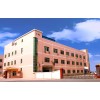GDF-8
- FOB Price:Get Latest Price >
- Min.Order:10 Vial(s)
- Payment Terms:T/T , Money Gram , Others(Bitcoin)
- Favorite
Business Type:Manufacturer
Country/Region:China
Ddu Verified
HOT Rank


Wuhan Hengwo Scien-Tech Co,ltd
We are professional supplier of Steroid Hormones,Flavor&Fragrance,API,Food/Feed Additives,Vitamin and Amino acid,Raw Steroid Powder,Injectable Steroids,Peptides,Testosterone Steroids,Trenbolone Steroi
Business Type:Manufacturer
Country/Region:China
Ddu Verified
HOT Rank

Alias:Growth Differentiation Factor 8
Purity : 95%
Specification:1mg/vial
Grade : Pharmaceutical Grade
Myostatin (also known as growth differentiation factor 8, abbreviated GDF-8) is a myokine, a protein produced and released by myocytes that acts on muscle cells' autocrine function to inhibit myogenesis: muscle cell growth and differentiation. In humans it is encoded by the MSTN gene.Myostatin is a secreted growth differentiation factor that is a member of the TGF beta protein family.
Myostatin (GDF-8) is a member of the transforming growth factor-beta (TGF-beta) superfamily that is highly expressed in skeletal muscle, and myostatin loss-of-function leads to doubling of skeletal muscle mass. Myostatin-deficient mice have been used as a model for studying muscle-bone interactions, and here we review the skeletal phenotype associated with altered myostatin signaling. It is now known that myostatin is a key regulator of mesenchymal stem cell proliferation and differentiation, and mice lacking the myostatin gene show decreased body fat and a generalized increase in bone density and strength. The increase in bone density is observed in most anatomical regions, including the limbs, spine, and jaw, and myostatin inhibitors have been observed to significantly increase bone formation. Myostatin is also expressed in the early phases of fracture healing, and myostatin deficiency leads to increased fracture callus size and strength. Together, these data suggest that myostatin has direct effects on the proliferation and differentiation of osteoprogenitor cells, and that myostatin antagonists and inhibitors are likely to enhance both muscle mass and bone strength.